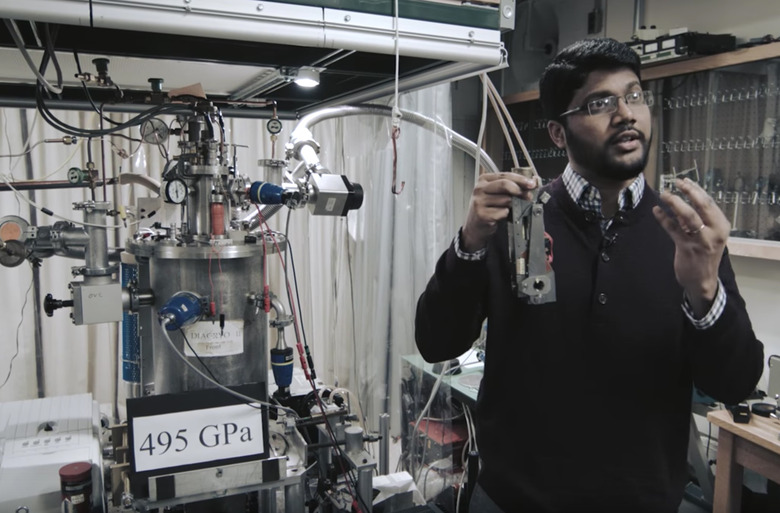Scientists Find A Way To Turn Hydrogen Into A Metal
It's not every day that scientists are able to create an entirely new substance, but Harvard researchers managed to do just that, and in the process created what could be a world-changing material with a bunch of different applications. It's called atomic metallic hydrogen, and it's exactly what it sounds like: hydrogen in the form of metal. If that sounds weird, it probably should, because it's literally never existed on the planet before now.
[bgr-dont-miss url="https://bgr.com/2017/01/26/t-mobile-customer-service-fail-idiot/" title="" label="" gradient=""]
So how to do you turn the most abundant element into something that's never existed before, at least here on Earth? You squeeze it really really hard. In fact, in order to achieve the metallic bond the scientists had to apply over 71 million pounds-per-square-inch of pressure to a small amount of hydrogen. That's more pressure than exists in the very core of the Earth itself, which is why they're so confident that it's a substance found nowhere else on our planet.
"This is the holy grail of high-pressure physics," Isaac Silvera, Harvard Professor of Natural Sciences said. "It's the first-ever sample of metallic hydrogen on Earth, so when you're looking at it, you're looking at something that's never existed before."

What's particularly interesting about all of this is the various applications that metallic hydrogen could have. The researchers believe that it could function as a superconductor — a conductive material with zero resistance — at room temperature. Superconductive materials already exist, but often require specific temperature thresholds to achieve superconductivity. If metallic hydrogen is different, it could be used in everything from high-speed, maglev trains to smartphones, and would almost certainly become a prized commodity. That is, if further research and testing can reliably create it in quantities large enough to useful.
